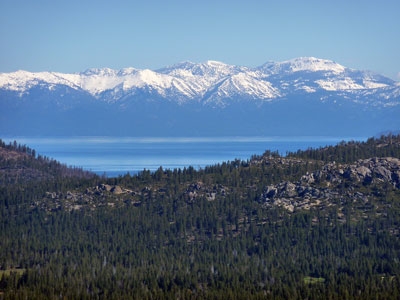
Lake Tahoe clarity not impaired by Angora Fire
The clarity of the Sierra Nevada's largest alpine lake - Lake Tahoe - was not significantly impaired in the aftermath of the 2007 Angora Fire, according to a story in the Reno Gazette-Journal.
Proactive steps taken by the U.S. Forest Service to reseed the land charred by the fire, which burned 254 homes and blackened 3,000 acres, were credited for helping stave off erosion that could have clouded the lake.
The story was prompted by the release in August of the results of an annual survey of Lake Tahoe clarity by the UC Davis Tahoe Environmental Research Center. TERC reported that the lake was clear to an average depth of 68.1 feet in 2009, holding steady for the ninth year in a row. However, the lake is considerably less clear than it was when researchers first began tracking its clarity in 1968, when it was clear to an average depth of 102.4 feet.
"There was concern that erosion from the (Angora) burn area would get into the lake and cause problems," TERC director Geoff Schladow told the Reno paper. "But we found that the impact from the fire was negligible, which was a great relief for us. All we can say is we may have dodged a bullet on that one."
The newspaper also presented other findings from the 2009 TERC report:
- Invasive quagga mussels were found on 10 boats inspected by Tahoe management agencies as they headed for the lake.
- More precipitation fell as rain and less as snow.
- Algae attached to rocks and docks increased along the northeast shoreline.
- The amount of water-clouding particles and nutrients reaching the lake by west-side streams increased as precipitation rose from previous years.

Lake Tahoe clarity holding steady. (Photo by Roy Tennant, freelargephotos.com)
